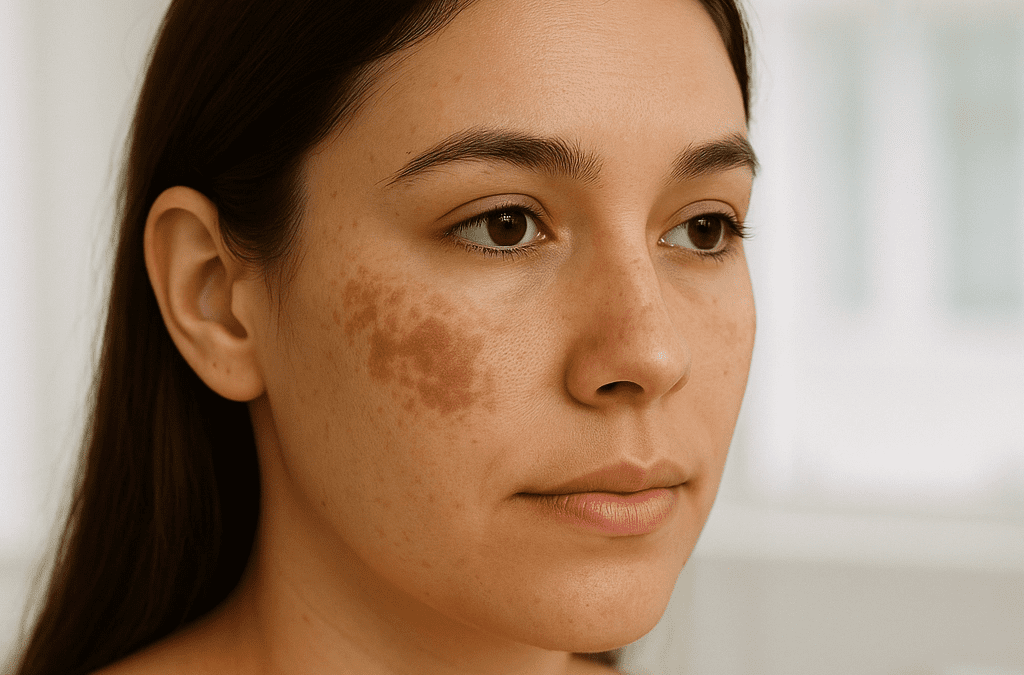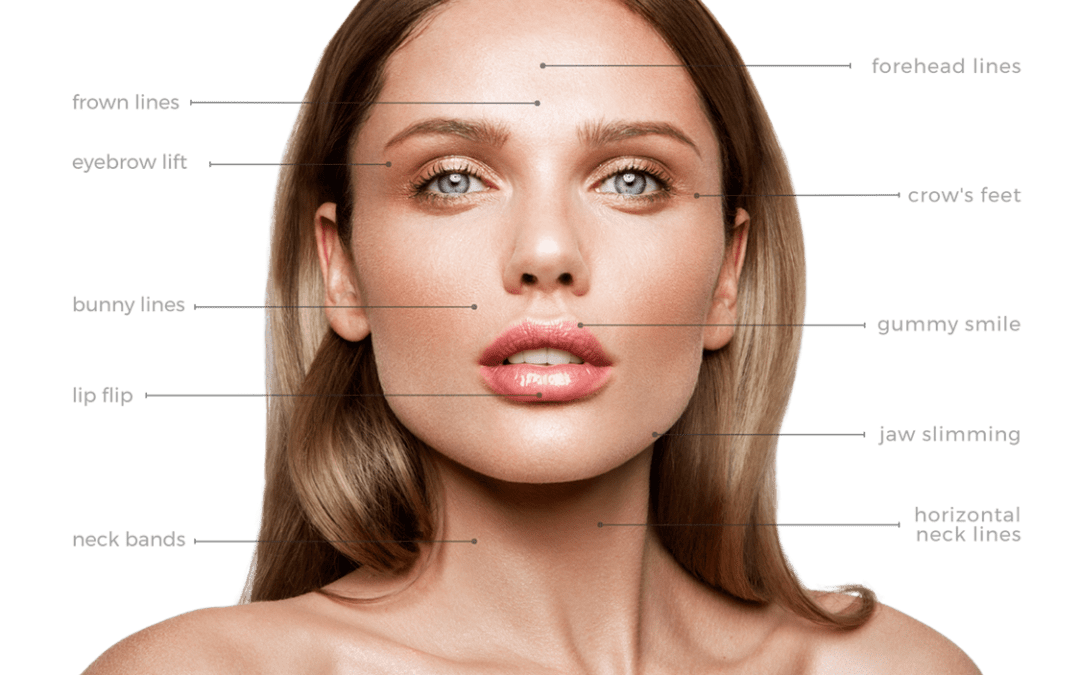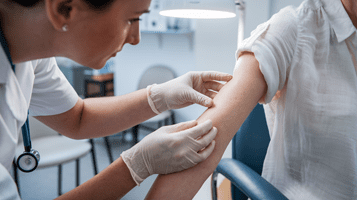In observance of Rare Disease Day (February 29), Arizona Skin Dermatology dedicates this article to rare skin conditions and their defining features, causes, and treatment options.
Causes and Types of Rare Skin Diseases
Rare dermatological disorders may develop due to the following factors:
Genetics
Genetic mutations or faulty genes present from birth can contribute to rare skin diseases. These disorders often require lifelong management and treatment. Some examples include:
- Epidermolysis Bullosa is a group of rare gene disorders characterized by fragile skin that blisters and tears easily. Painkillers, antidepressants, and medicine for epilepsy can help manage the pain. For intense or intolerable pain, doctors may prescribe safe doses of morphine, fentanyl, or ketamine.
- Harlequin Ichthyosis appears as thick, diamond-shaped plates of skin separated by deep cracks. Doctors focus their treatment on hydrating the skin with lotions, creams, oils, and ointments. Newborns with harlequin ichthyosis require intensive care until the scales peel off.
- Xeroderma Pigmentosum affects one in one million people in the US. It is characterized by severe photosensitivity and skin pigmentation changes, contributing to an extremely high risk of skin cancer. This condition can sometimes lead to progressive neurologic degeneration, wherein nerve cells in the brain or peripheral nervous system malfunction or die. Sun avoidance, sun protection, neurological management, ocular check-ups, and dermatology visits are necessary to manage this disease. Treatment for precancerous spots or skin cancer is also essential if they arise.
- Neurofibromatosis Type 1 (NF1), though primarily a neurocutaneous syndrome, causes skin pigmentation issues and tumors throughout the nerves of the skin, brain, and other body parts. Unfortunately, NF1 has no known treatment or cure. Prescription medication can help with pain, while surgery or radiation therapy can help eliminate tumors.
- Incontinentia Pigmenti produces blistering, rashes, and swirling pigmentation patterns in the skin. It can also affect the eyes, nervous system, hair, and teeth. There is no precise treatment for this condition. Regular visits to a local dermatologist, ophthalmologist, and dentist can help manage the condition and prevent the development of problems.
- Acral Peeling Skin Syndrome causes the top layer of skin to peel. “Acral” refers to the peeling most evident on the hands and feet, although it may also occur on the arms and legs. Avoiding excessive exposure to heat, humidity, and skin friction, as well as applying prescribed topical creams or keratolytic agents, can help manage this uncommon skin condition.
Autoimmune Diseases
Some dermatological diseases arise because the immune system mistakenly attacks the body’s tissues. Examples include:
- Pemphigus produces blisters that rupture and turn into open sores. Blisters can show up suddenly, spread, and linger for months or years. Pemphigus Foliaceus affects the skin on the face and upper body, while Pemphigus Vulgaris (about 70% of all cases) begins in the mouth and extends toward the skin or genitals. Immunosuppressive drugs, topical steroids, corticosteroids, antibiotics, medicated mouthwash, and IV immunoglobulin can help control the condition and prevent infections.
- Interstitial Granulomatous Dermatitis (IGD) is a distinct histopathological pattern with a varied clinical appearance, including linear cords (“the rope sign”), plaques, patches, and papules. IGD is more common in individuals with rheumatoid arthritis, lupus, or systemic vasculitis. Effective treatments include topical steroids or hydroxychloroquine.
- Bullous Pemphigoid appears as large, fluid-filled blisters on friction-subjected skin areas, including the armpits, lower abdomen, and upper thighs. Anti-inflammatory drugs (corticosteroids) and tetracycline antibiotics (doxycycline) are the primary treatments for this disease. In many cases, follow-up immunomodulatory therapies become necessary to minimize the side effects of chronic corticosteroid therapy or expedite skin healing.
Environmental Exposure
Harmful environmental factors can also cause rare dermatological conditions, including:
- Argyria turns the skin and mucous membranes blue or grayish. Recurring exposure to small amounts of silver or ingesting large doses of it causes this uncommon and unusual skin condition. It is harmless, but the discoloration is permanent and difficult to treat. People with argyria can struggle with anxiety, depression, or become reclusive due to concerns about their skin color. Using a 5% hydroquinone treatment could help bring down the silver content and reduce the skin’s blue-gray hue, although it may not be 100% effective.
- Sebaceous carcinoma arises in the skin’s oil glands. It often affects the eyelid, appearing as a firm, deep, and painless lump. Previous treatment with radiation therapy or a genetic condition known as Muir Torré syndrome are among the suspected risk factors. Mohs surgery is usually the mainstay of treatment for sebaceous carcinoma.
- Merkel Cell Carcinoma is an aggressive, fast-growing form of skin cancer. It emerges as a painless, flesh-colored or bluish-red nodule, often on the face, head, or neck. Excessive exposure to ultraviolet (UV) light, such as sunlight or artificial lighting from tanning beds, increases the risk of developing Merkel cell carcinoma. According to the Skin Cancer Foundation, it is 40 times rarer than melanoma and affects one in 130,000 people in the US. Treatment may include surgical excision, radiotherapy, chemotherapy, and immunotherapy. If you have a new mole or skin growth anywhere on your body (don’t forget to check the areas hidden in plain sight), please contact Arizona Skin to schedule a skin cancer screening near you.
Rare skin diseases can significantly impact one’s well-being. Being aware of the different types and causes can encourage early detection and management, alleviating or preventing symptoms from worsening. Research focused on unveiling new and innovative therapies is also ongoing, providing hope for those diagnosed with such complex conditions.
Takeaway
Rare dermatologic diseases are often undiagnosed or misdiagnosed due to a lack of awareness and understanding. Staying informed through credible sources like the American Academy of Dermatology, the American Skin Association, and the Centers for Disease Control and Prevention can help patients and their loved ones navigate diagnosis and treatment. Our Blog also provides in-depth information on skin diseases.

What to Expect with a Full-Body Skin Exam
Why Regular Full-Body Skin Exams Are Essential in Arizona Living in Arizona means enjoying abundant sunshine year-round. While our sunny climate offers many benefits, it also puts us at higher risk...

Melasma in Arizona: Tips and Best Practices
Living in Arizona means enjoying abundant sunshine almost year-round, but this desert blessing comes with unique skin challenges. Among these, melasma stands out as a particularly frustrating...

Skincare Routines for Teens, Adults, and Seniors
At Arizona Skin Institute, we understand that skincare isn't one-size-fits-all. Your skin's needs evolve dramatically throughout your life, requiring different approaches and ingredients at each...

Preventative Boxox in Your 20s
When you hear the word Botox, you probably picture someone smoothing out fine lines and wrinkles that have already formed. Traditionally, Botox has been thought of as a way to turn back the clock —...

Skincare Ingredients to Avoid if You Have Rosacea
If you have rosacea, you know that your skin can feel like it’s walking a tightrope: one wrong step, and you're dealing with stinging, intense redness, or even painful flare-ups that can last for...

Skin Purging vs Breakouts: How to Tell the Difference
If you’ve ever started a new skincare product only to find your skin looking worse before it looks better, you’re not alone. It’s a frustrating experience that often leads to confusion: Is my skin...

When To Consult A Dermatologist
Our skin is often a reflection of our overall health, acting as a visible indicator of internal balance or imbalance. While minor changes like occasional dryness or mild irritation are typically...

